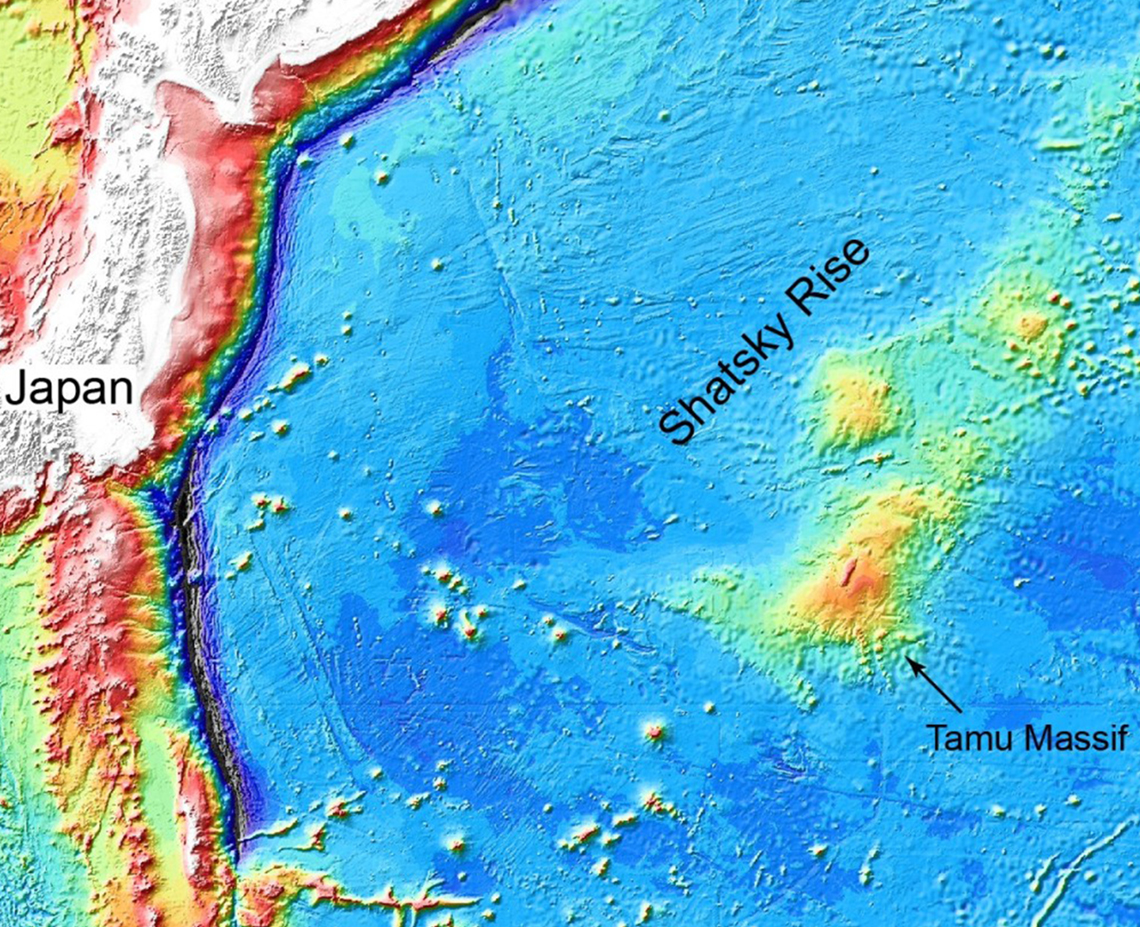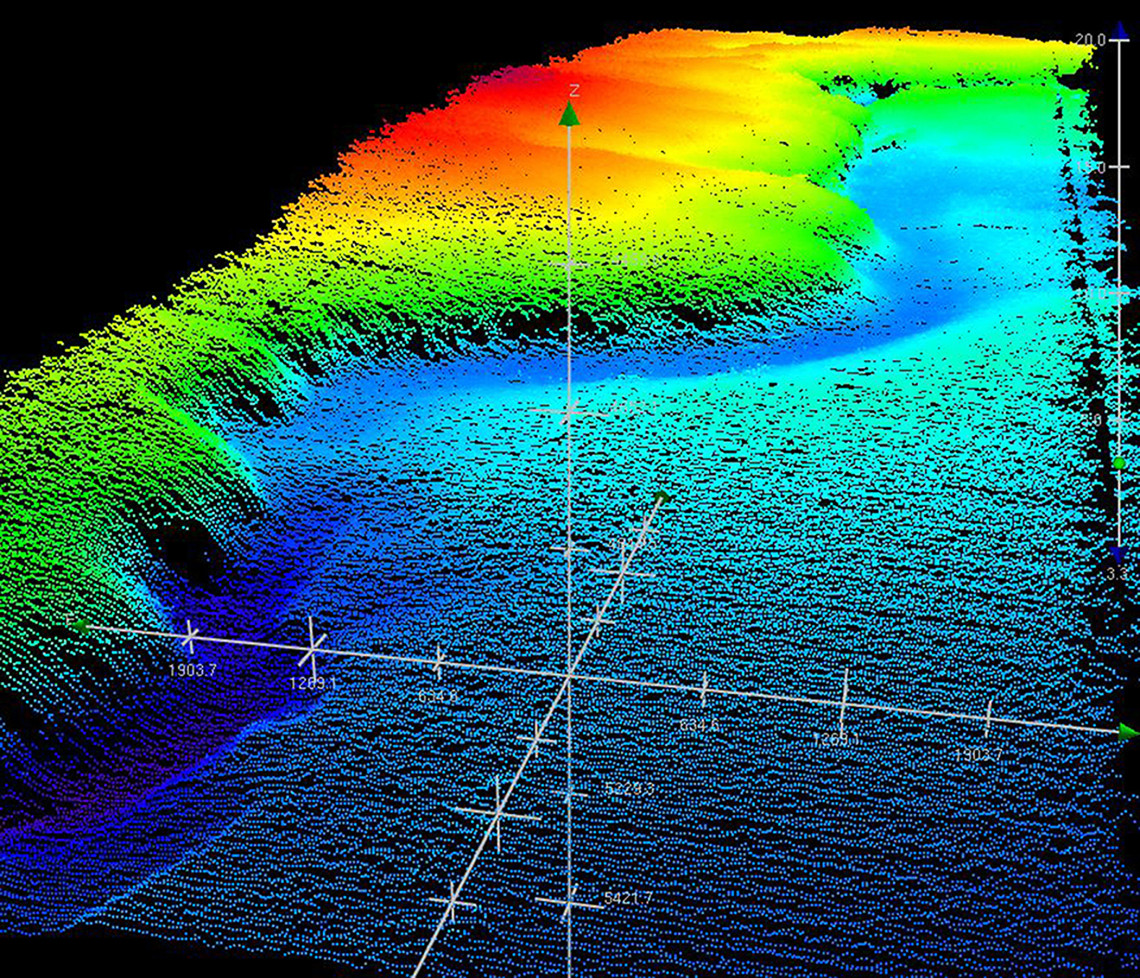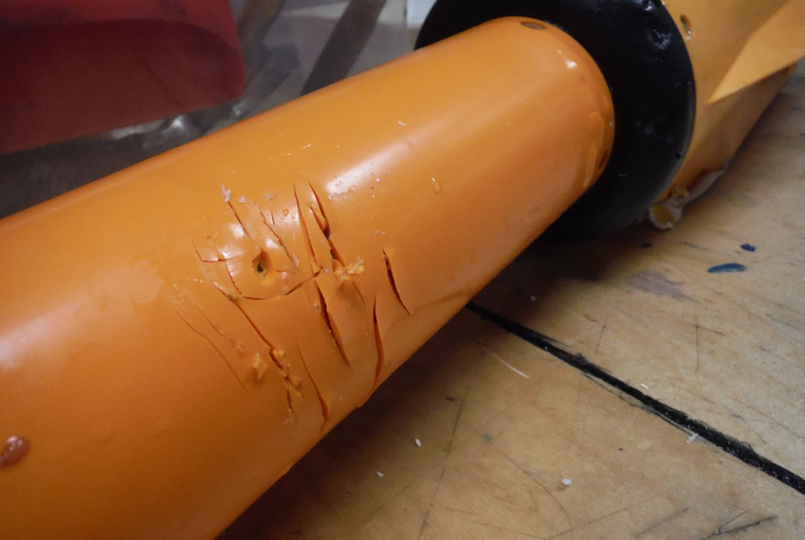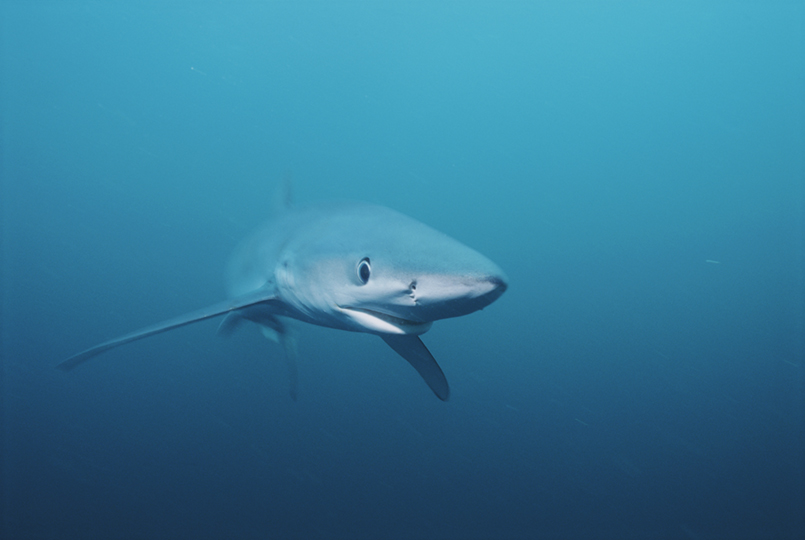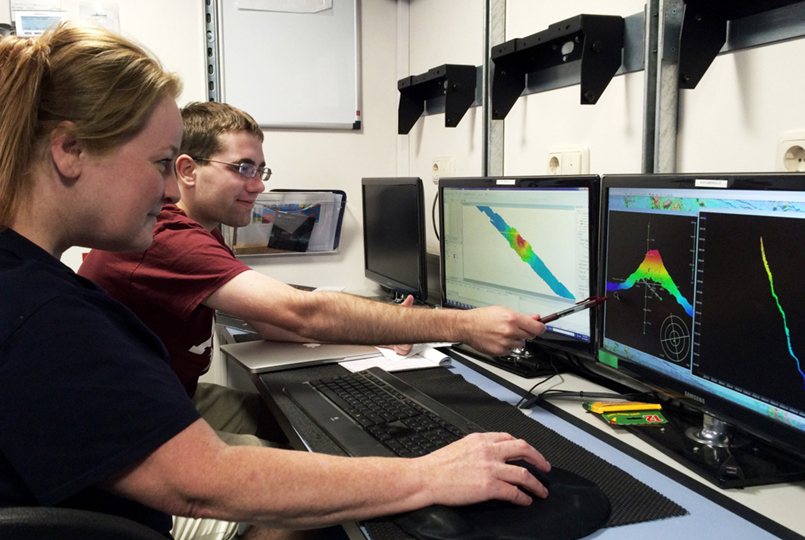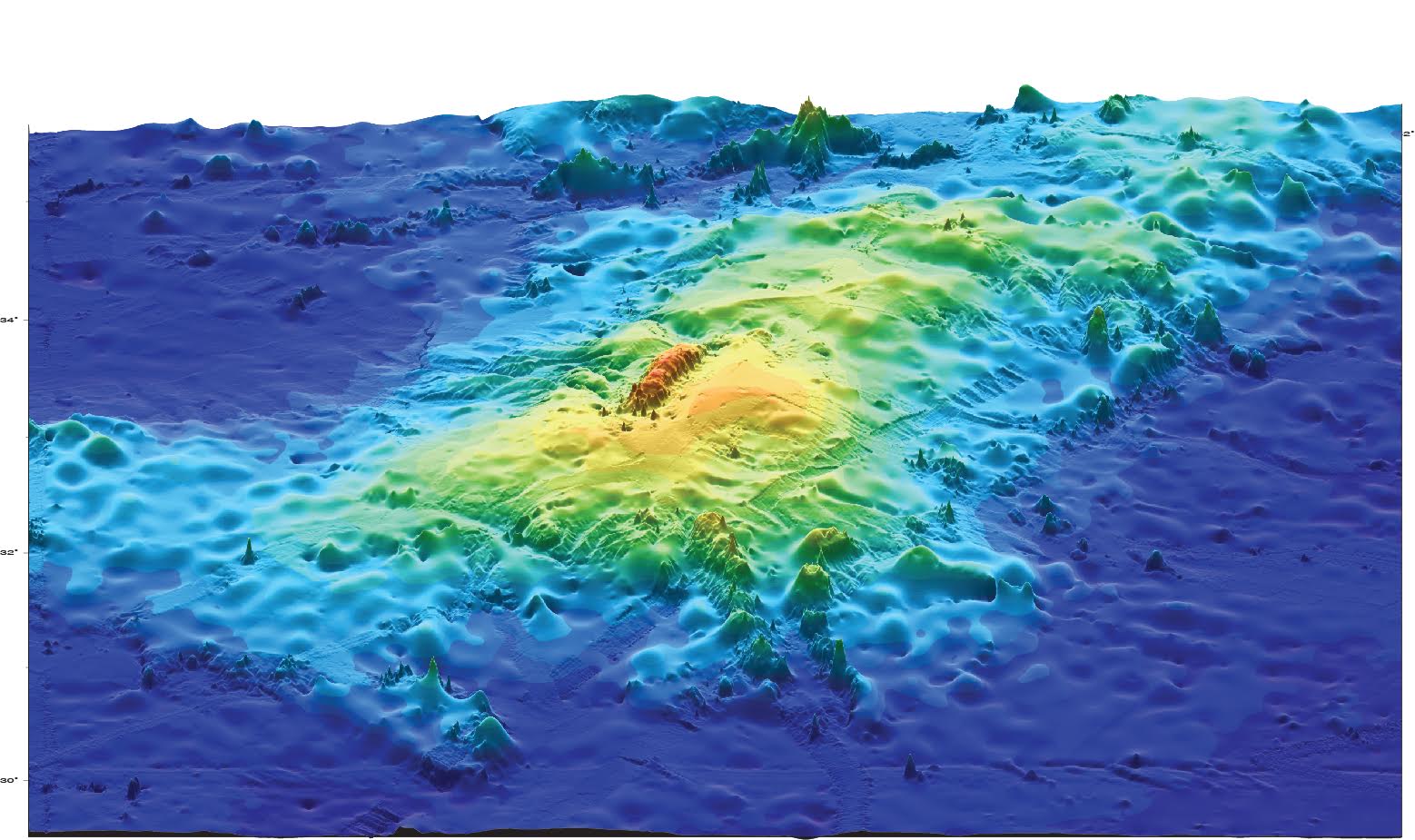Tamu Massif has a very gentle slope, meaning that it is not tall, but extremely wide. It is categorized as a shield volcano because the gentle slope and dome-shape make it look like a giant shield protruding from the ground.
Studying this volcano, and many of Earth’s underwater features, is challenging because it lies in the dark depths of the ocean. Sager and his research team have delved these depths, discovering more about the formation of seafloor structures.
To study Tamu Massif, the team used sonar and magnetic fields to create maps of the ocean floor with considerable detail. Using this data, the scientists create 3D maps that allow us to look at what was once hidden underneath the ocean.
This information reveals that Tamu Massif formed when an enormous amount of magma rose up from Earth’s mantle. Tamu Massif sits at a unique boundary of three tectonic plates. Magma rose up through the particularly thin crust at this intersection, cooled, and created new rock to form this extraordinary volcanic mass.
